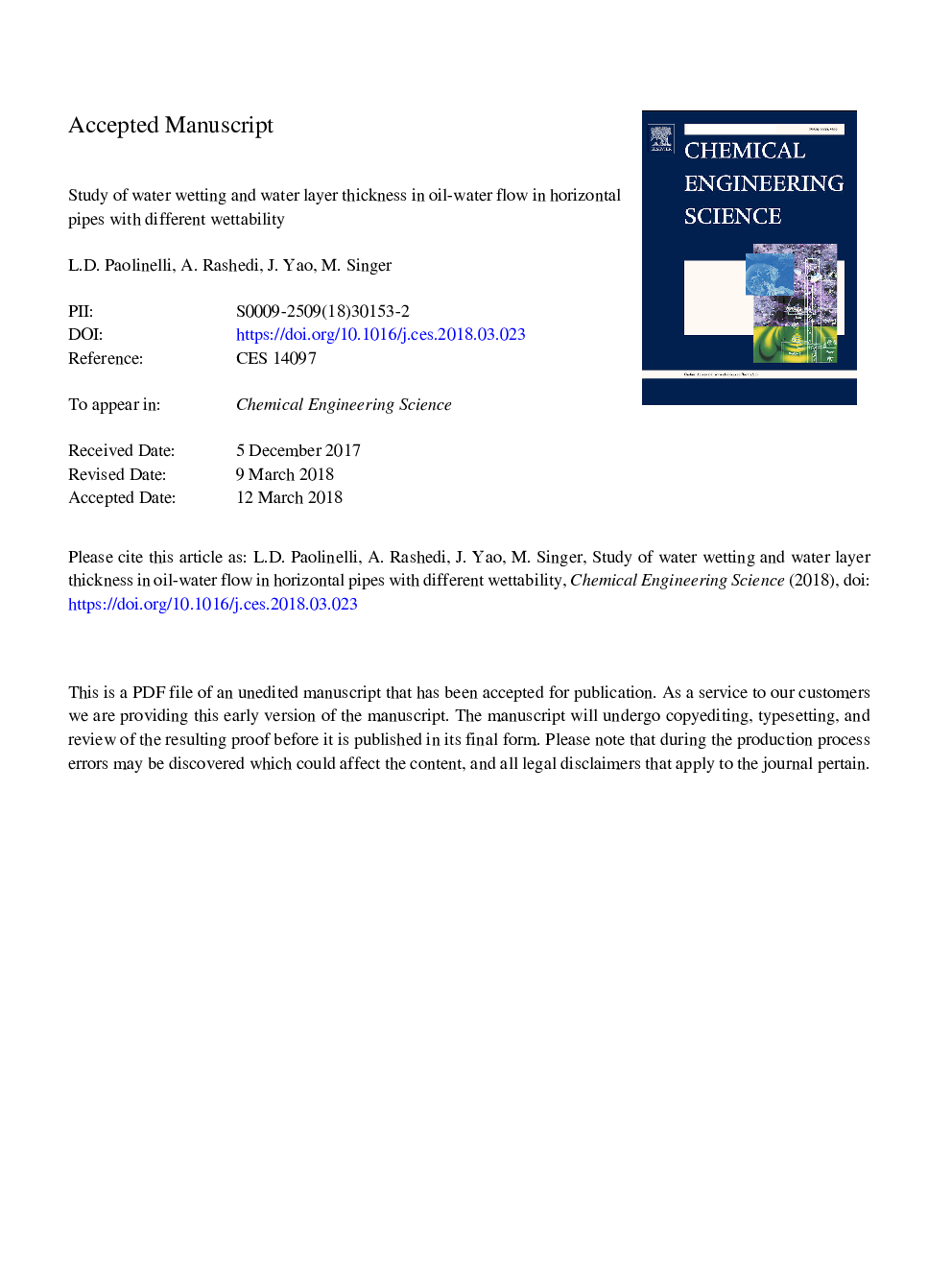| کد مقاله | کد نشریه | سال انتشار | مقاله انگلیسی | نسخه تمام متن |
|---|---|---|---|---|
| 6588552 | 1423236 | 2018 | 53 صفحه PDF | دانلود رایگان |
عنوان انگلیسی مقاله ISI
Study of water wetting and water layer thickness in oil-water flow in horizontal pipes with different wettability
ترجمه فارسی عنوان
بررسی رطوبت آب و ضخامت لایه آب در جریان آب-نفت در لوله های افقی با ضخامت متفاوت
دانلود مقاله + سفارش ترجمه
دانلود مقاله ISI انگلیسی
رایگان برای ایرانیان
کلمات کلیدی
جریان لوله نفت و آب، مرطوب کننده لوله، خوردگی، جریان پراکنده، اندازه قطره، مدل سازی،
موضوعات مرتبط
مهندسی و علوم پایه
مهندسی شیمی
مهندسی شیمی (عمومی)
چکیده انگلیسی
Two-phase oil-water pipe flow is common in oil production and transportation. Appropriate estimation of phase wetting (oil wet or water wet) of internal pipe walls can significantly reduce corrosion control costs, and increase confidence in measures taken to ensure the integrity of pipelines. Water wetting can be avoided by fully dispersing the water phase into the oil phase. It has been suggested that pipe wettability may affect oil-water flow patterns; particularly, water-in-oil dispersed flow transition boundaries. However, there are no systematic studies in the literature on this matter for carbon steel pipes, which are the preferable choice for economic reasons in the oil and gas industry. Moreover, traditional and widely used models to predict the onset of dispersed flow do not consider the effect of pipe wettability. This work studies phase wetting and water layer thickness in large scale oil-dominated oil-water horizontal flow in carbon steel and PVC pipes of similar internal diameter (0.1â¯m) and roughness, but different wettability. The effect of wetting hysteresis (oil or water pre-wetted pipe surface) on phase wetting is also investigated. It is demonstrated that pipe wettability plays a very important role on the transition boundaries for phase wetting (oil wet to water wet) and the transition to fully dispersed flow. Water droplet deposition and spreading are identified as the main mechanisms for incipient segregation in a hydrophilic pipe. In a hydrophobic pipe, poor surface wettability hinders the sticking and spreading of water droplets. Water wetting in a hydrophobic pipe requires a sufficient low flow velocity at which local droplet accumulation and coalescence becomes the dominant segregation mechanism. Predictions from available hydrodynamic models are compared with the experimental results and recommendations are provided.
ناشر
Database: Elsevier - ScienceDirect (ساینس دایرکت)
Journal: Chemical Engineering Science - Volume 183, 29 June 2018, Pages 200-214
Journal: Chemical Engineering Science - Volume 183, 29 June 2018, Pages 200-214
نویسندگان
L.D. Paolinelli, A. Rashedi, J. Yao, M. Singer,
